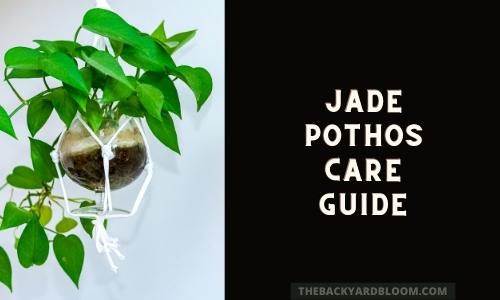Please note that this post may contain affiliate links. You can read my full affiliate disclosure at the bottom of the page.
I tried propagating my Marble Queen Pothos from some vines that needed to be trimmed one day and now I have 5 different Marble Queen Pothos plants. I have Golden pothos plants growing all over too from cuttings. I was surprised at how fast and easy it was for the pothos cuttings to start growing roots in water and how easily it transplanted over to soil. Plus the bonus of free extra pothos plants is great.
Pothos plants are amazingly easy plants to care for (Pothos Plant Care Guide), but they are also very easy to propagate in water from a cutting.
Propagating plants from cuttings is my favorite way to start new plants because it is so easy to do and doesn’t require too much effort or supplies.
If you would like to learn how to propagate a pothos plant in water in cuttings then this is the article that can show you how.
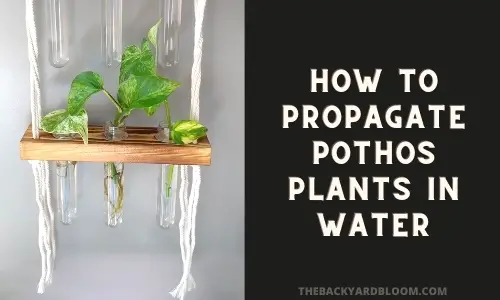
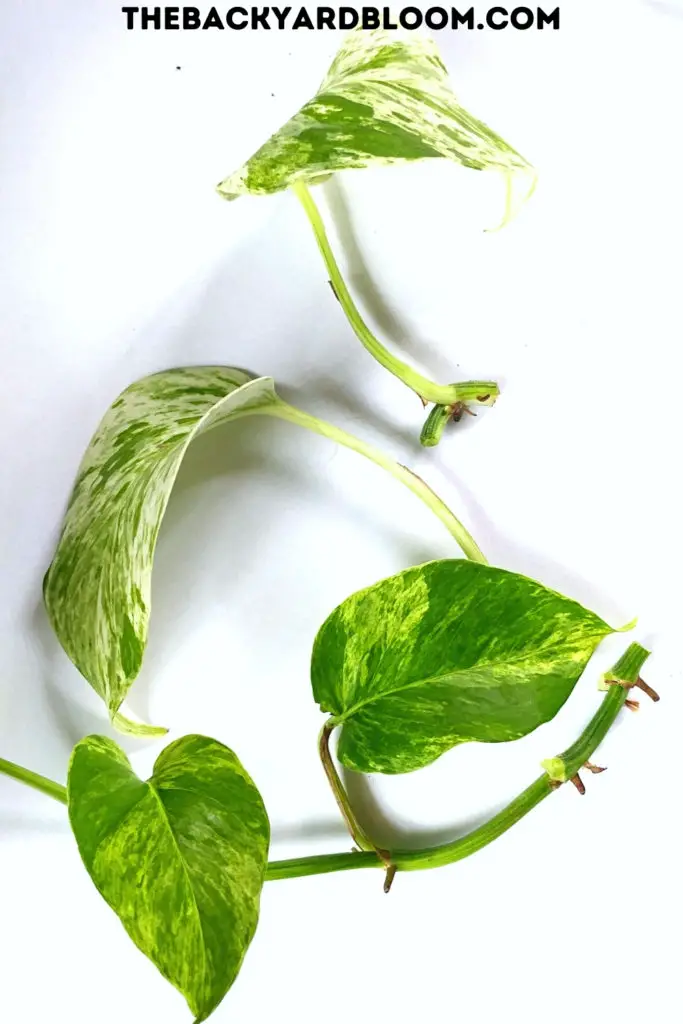
What You Need to Propagate Pothos Plants
- Scissors
- Pothos Cutting
- Propagations Station, Glass, or Jar
- Rooting Hormone (optional)
How to Cut Pothos For Propagation
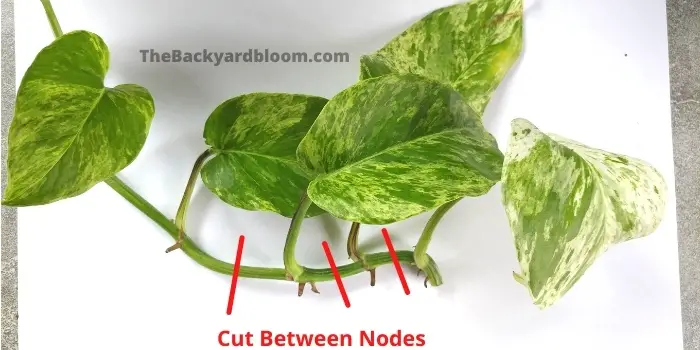
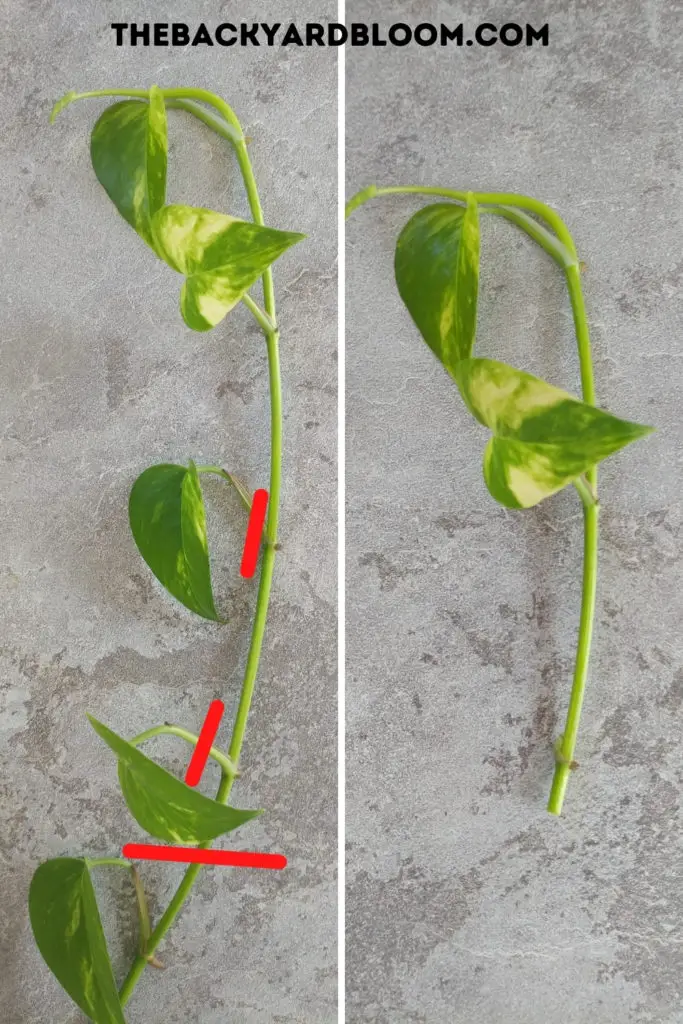
You’ll need either a sharp knife, pruning shears, or scissors for cutting your pothos plant.
Make sure to sterilize them before cutting. This helps to ensure you don’t expose your cutting to fungus or bacteria.
When cutting your pothos plant it is a good idea to find a vine that has gotten long and cut that off the parent plant.
Once you have your cutting you will want to cut between the nodes as pictured above.
It is recommended that you leave your cutting with several leaves at the top, instead of just leaving one leaf.
But as you can see in the picture of my Marble Queen pothos above I did cut between some of the nodes just leaving one leaf.
This has always worked out fine for me when rooting these cuttings in water. The main difference I noticed is the cutting with more leaves did grow roots faster.
What to Put Pothos Cuttings In for Water Propagation
I prefer my hanging propagation station for my plant cuttings, it helps keep things out of the way plus I don’t have a ton of space for all of my cuttings.
But you can put cuttings in just about anything that will keep the stem and nodes in water such as a small vase, a mason jar, or a glass.
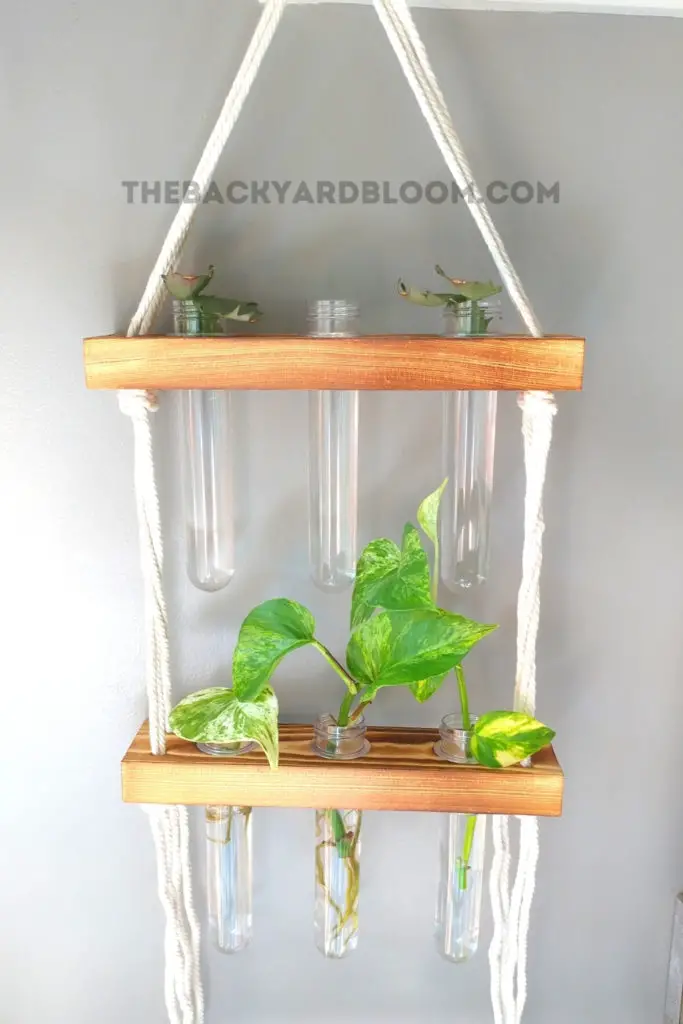
When putting your cuttings in water use filtered, rainwater, or distilled water. Tap water has chemicals and hard minerals that can harm your cuttings.
Change the water out at least once a week. Leaving the cuttings to sit in the same water can cause a build-up of bacteria which will result in things like root rot.
If you notice any algae growing on the sides of the container you are using for propagation be sure to clean that out.
Also, make sure to have your cuttings near bright indirect light. I keep my props near an east-facing sliding glass door, they get plenty of light throughout the day here.
How Long Does it Take to Propagate Pothos in Water?
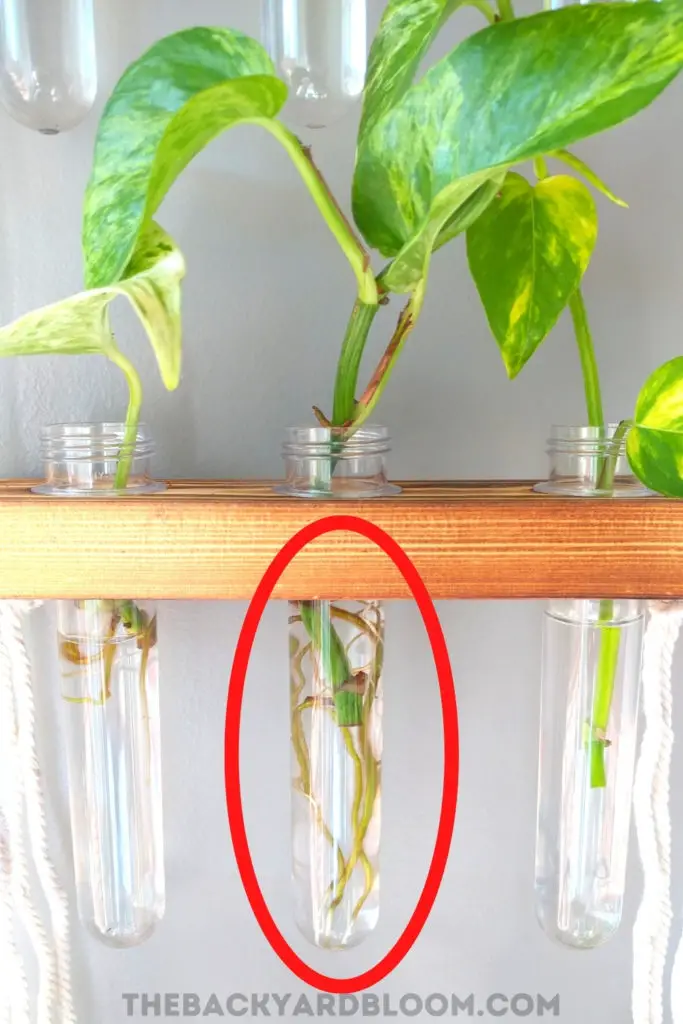
It takes around 4 weeks to get the root system that is pictured above.
How To Propagate A Pothos Cutting Fast
The most common question that people have when propagating pothos stem cuttings is, “How can I speed up my pothos propagation?”
If you would like to get faster rooting on your pothos cuttings you can use a rooting hormone but this isn’t a requirement for successfully propagating pothos due to their ease of rooting in water.
When propagating pothos plants I prefer to let the roots grow a few inches long before transplanting the cutting to a pot of soil.
You can also leave your pothos cutting growing in the water even longer if you would like. Sometimes people leave them growing in water for months before transplanting them to a soil medium.
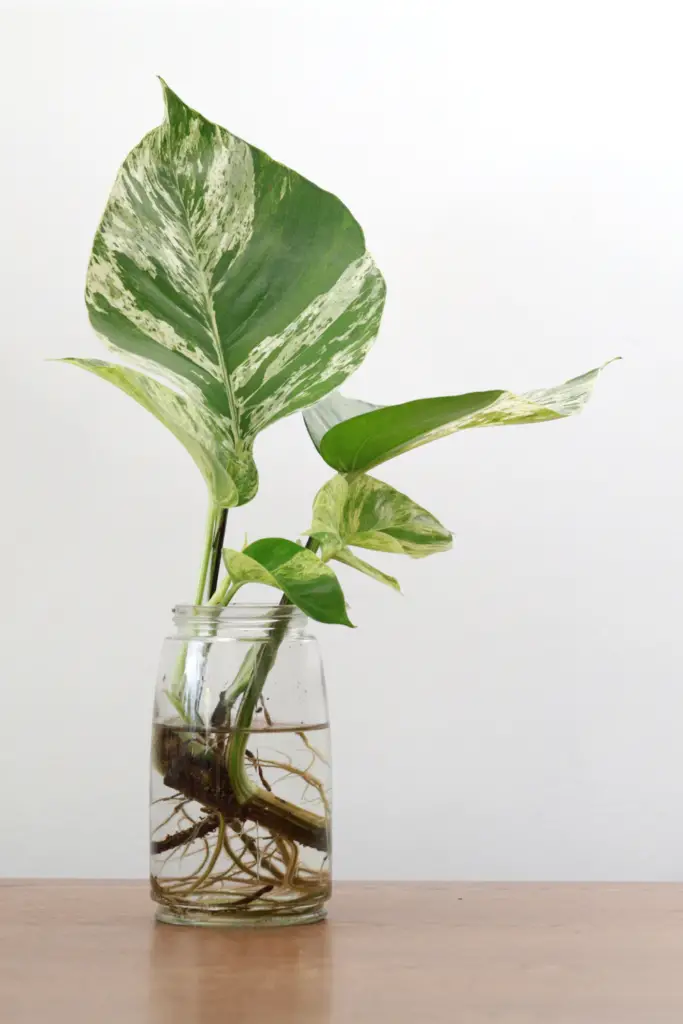
How To Propagate Pothos Plants Without Rooting Hormone
Many times people don’t have rooting hormone available or just don’t want to use it for various reasons. And the good news is that the rooting hormone is optional to use when propagating pothos plants. If you don’t want to use any just follow the steps above and don’t worry about putting rooting hormone on the cutting.
I have had tons of success when propagating my pothos without using any rooting hormone. The only difference I have noticed is that the rooting process is faster when I do use rooting hormone so I prefer to put it on the cuttings to speed up the process.
Planting Pothos Cuttings in Soil
Once your pothos cutting has a good amount of root growth it’s time to plant the cutting in soil.
You will want to get a well-draining pot and some soil to plant your cutting in.
Nursery pots work great for new plant cuttings.
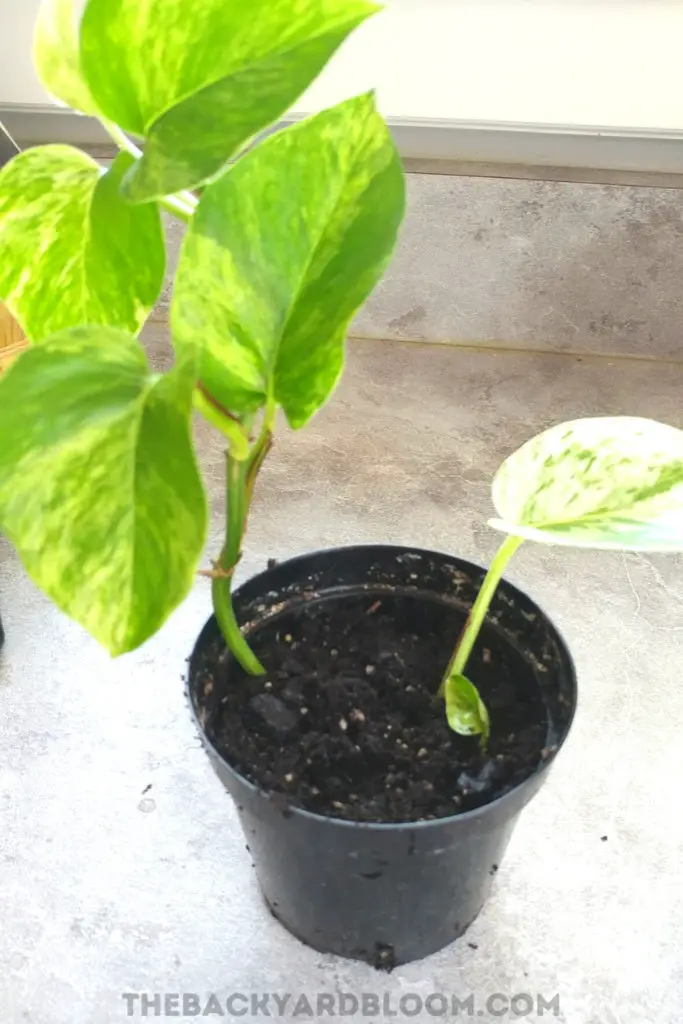
Once you plant your cutting in the soil you will want to water the soil well.
Pothos cuttings have been sitting in water while rooting so they are used to really soaking up water.
Terracotta pots are often recommended for pothos cuttings too. This way you can water your cuttings generously but the terracotta will help keep excess moisture from building up. This can be a good option if you tend to overwater your plants.
What is the Best Soil for Pothos Cuttings?
I prefer to use peat moss mixed with perlite when planting new cuttings. This way there are no fertilizers present in the soil, sometimes they can cause issues with new plants that are just starting out.
Also, pothos plants don’t need much for fertilization so you don’t need a potting mix that already has fertilizer/plant food, you can add this later on during the next growing season (spring and summer).
No, you cannot propagate a pothos without a node. In order to propagate a pothos plant, you need a node on the cutting. I have tried several times to do this without a node and it was not successful.
You can propagate pothos plants in the winter, but it will take longer for the process to happen than propagating from cuttings during the spring or summer.
The most common reason that pothos roots rot in water is due to leaving the cutting sit in the same water for long periods of time. This allows for a bacterial build-up which will lead to root rot. To help stop this from happening you want to frequently change the water that your pothos is rooting in and clean out any algae build-up on the container.
